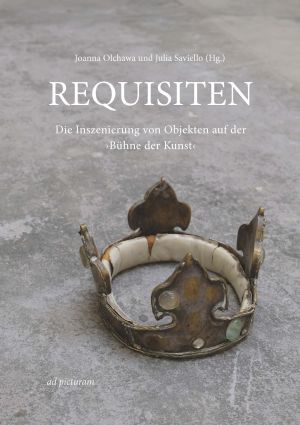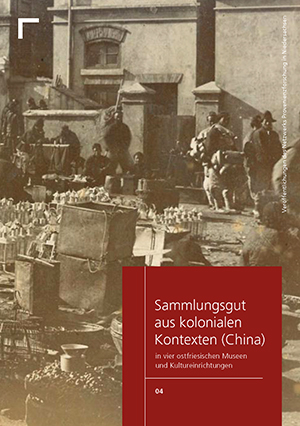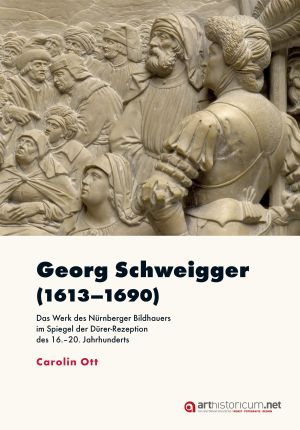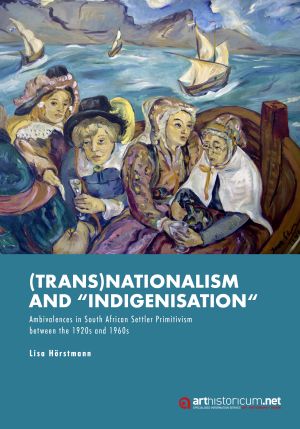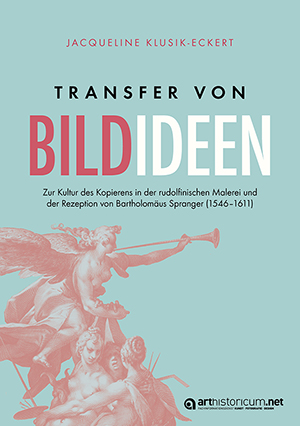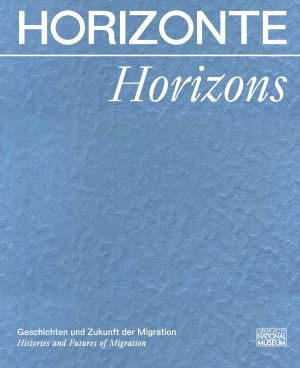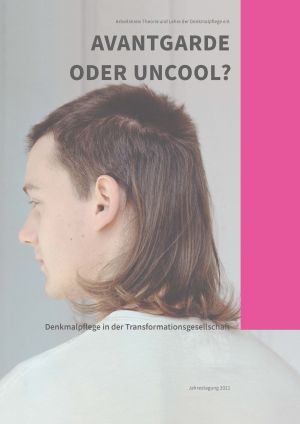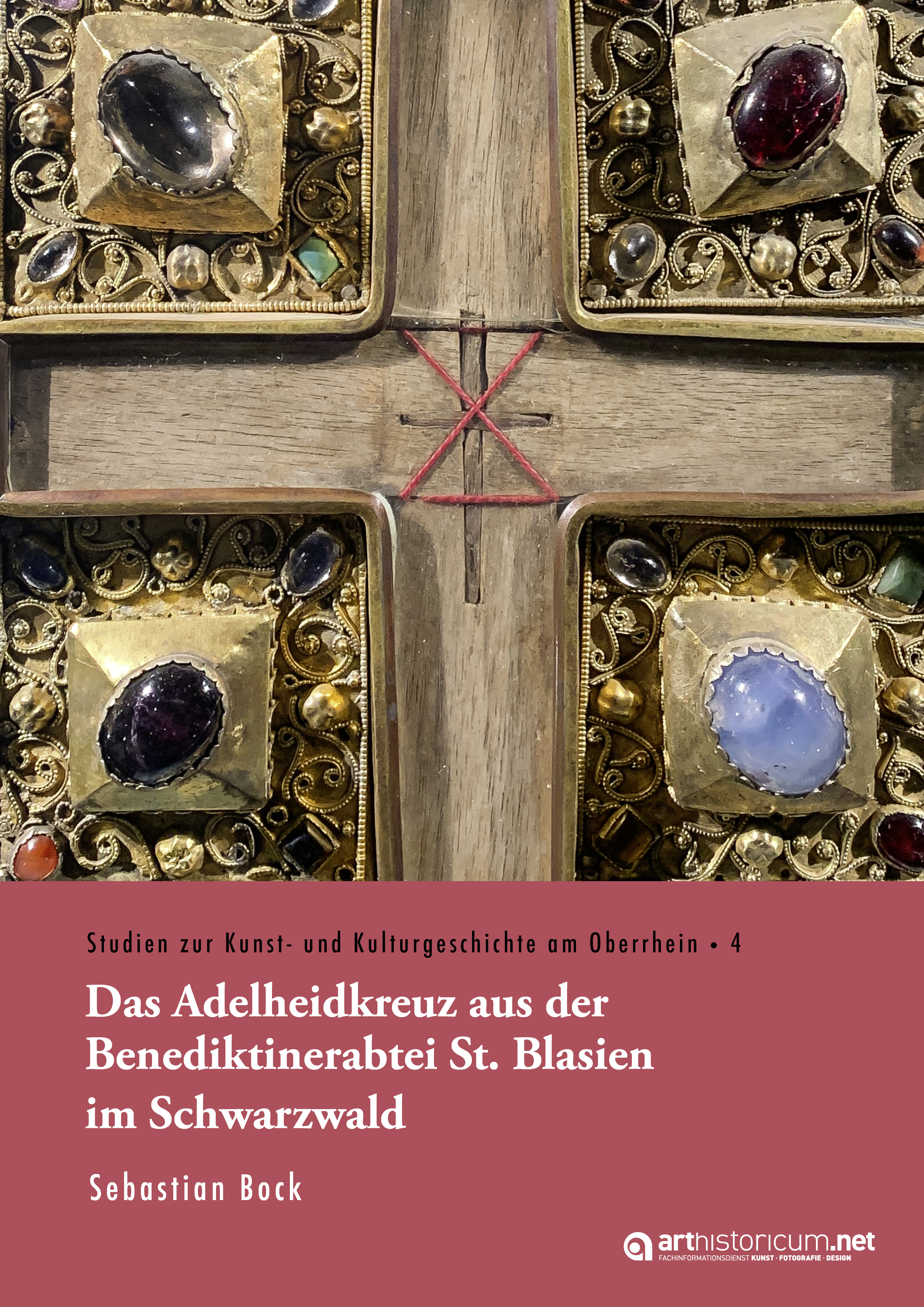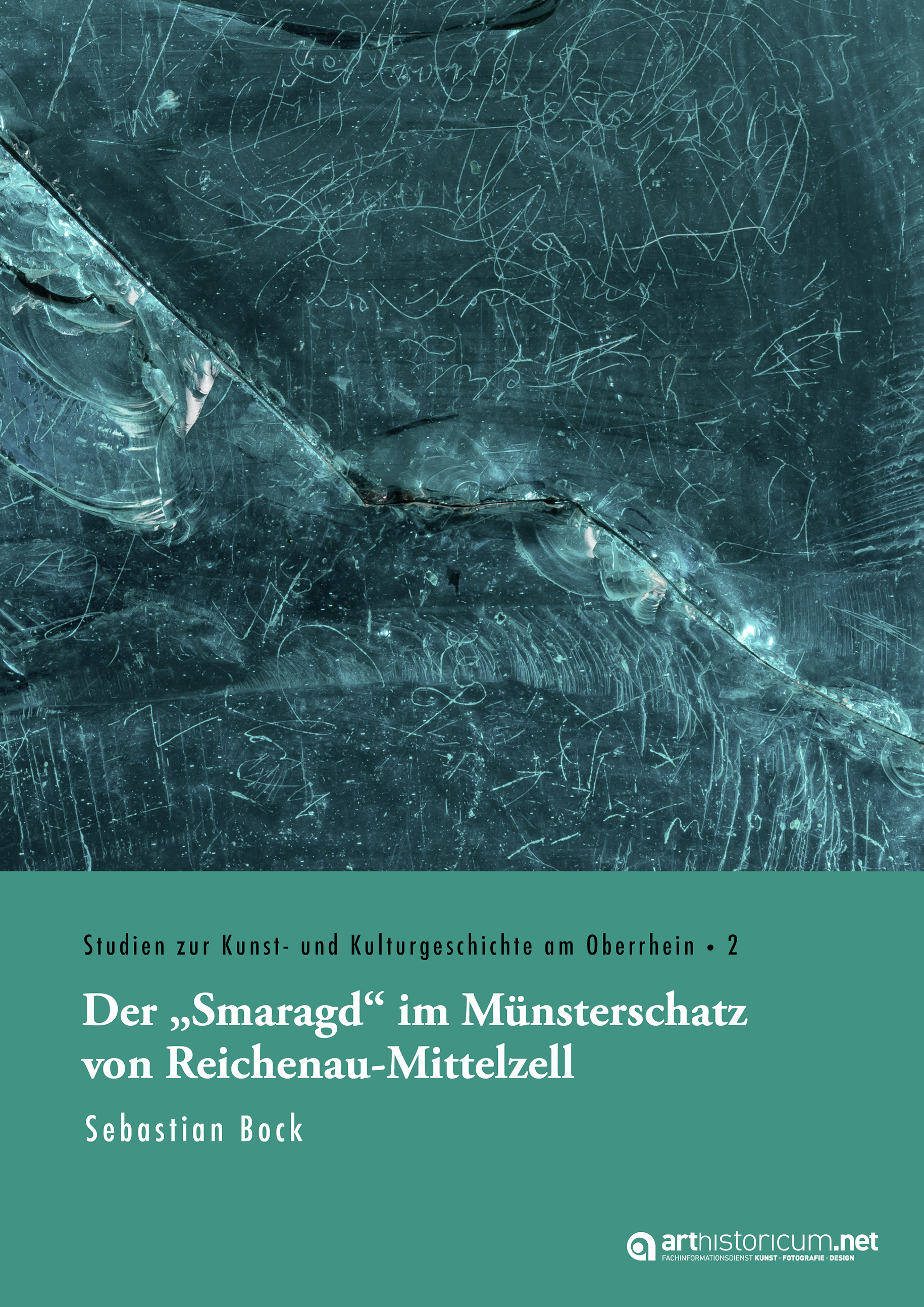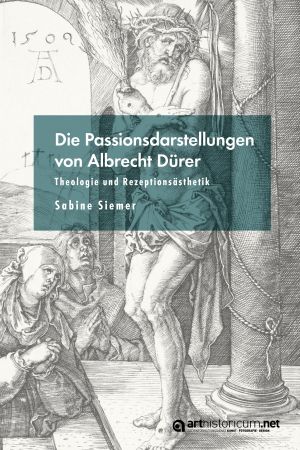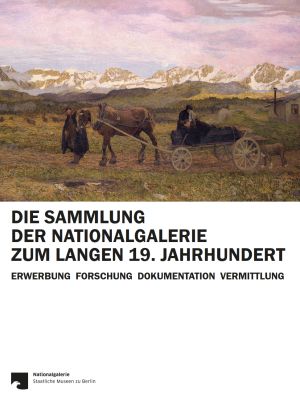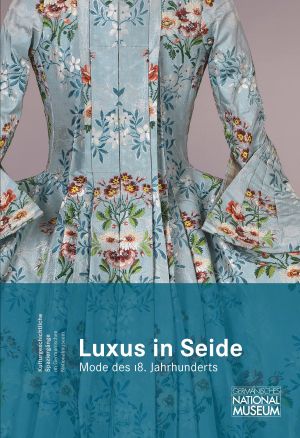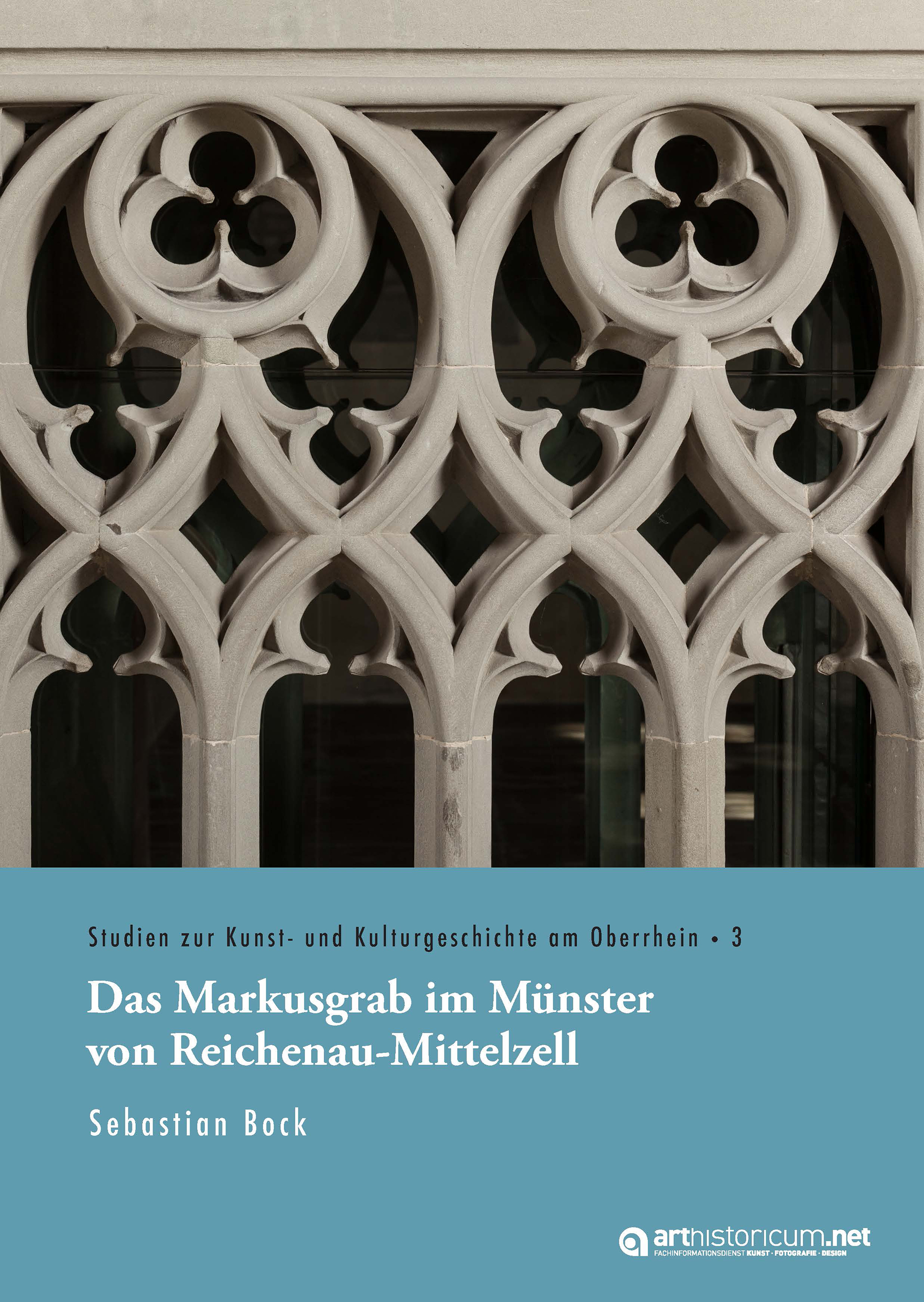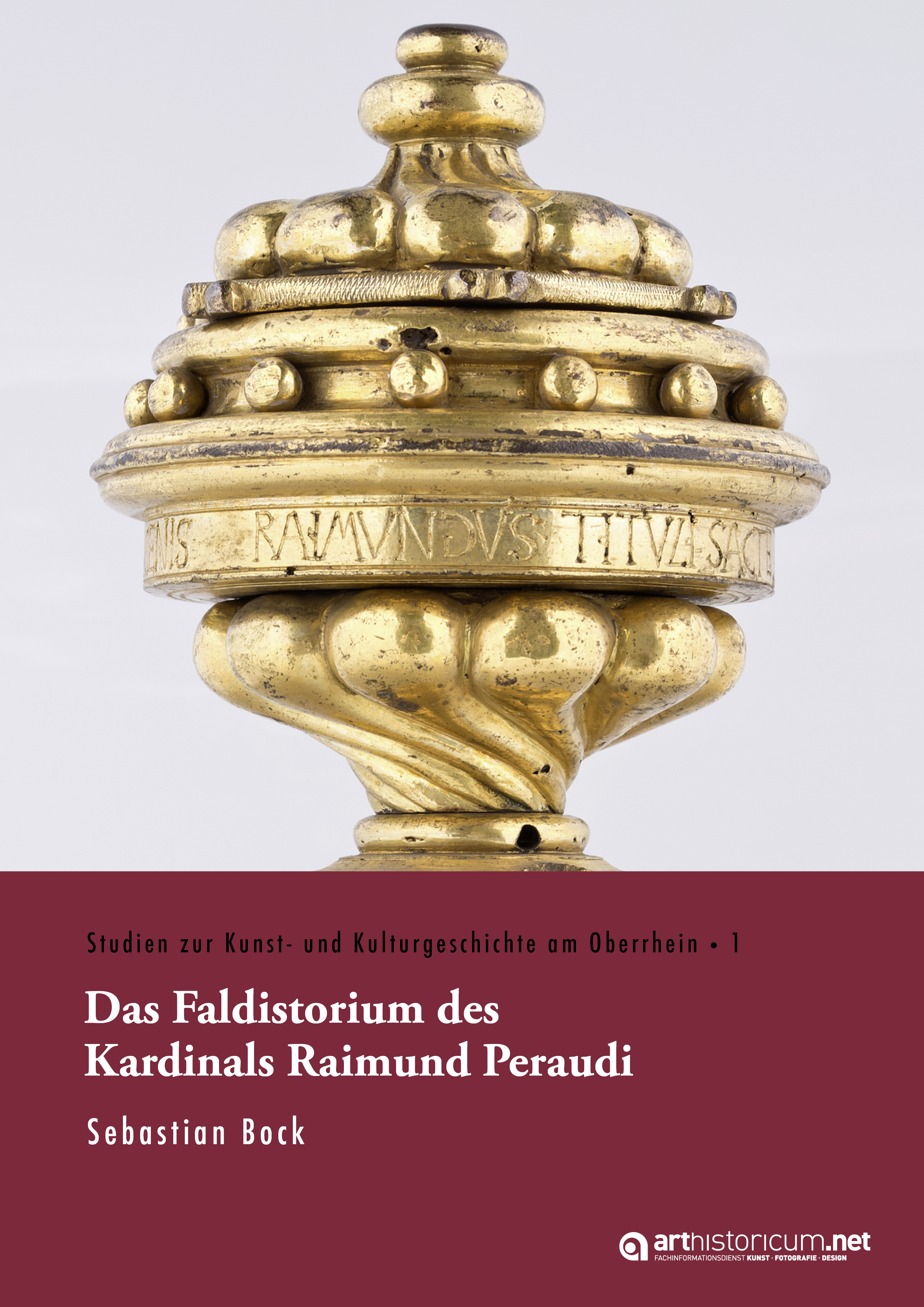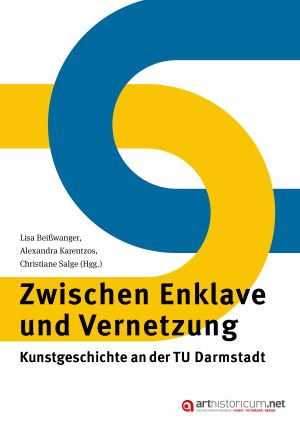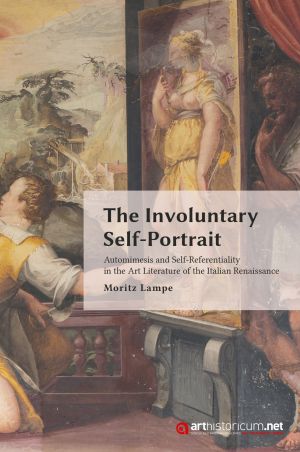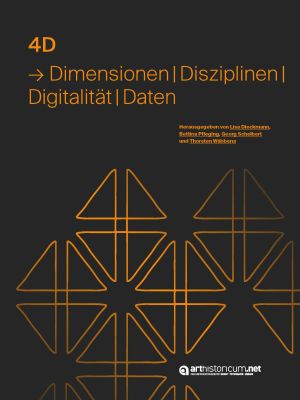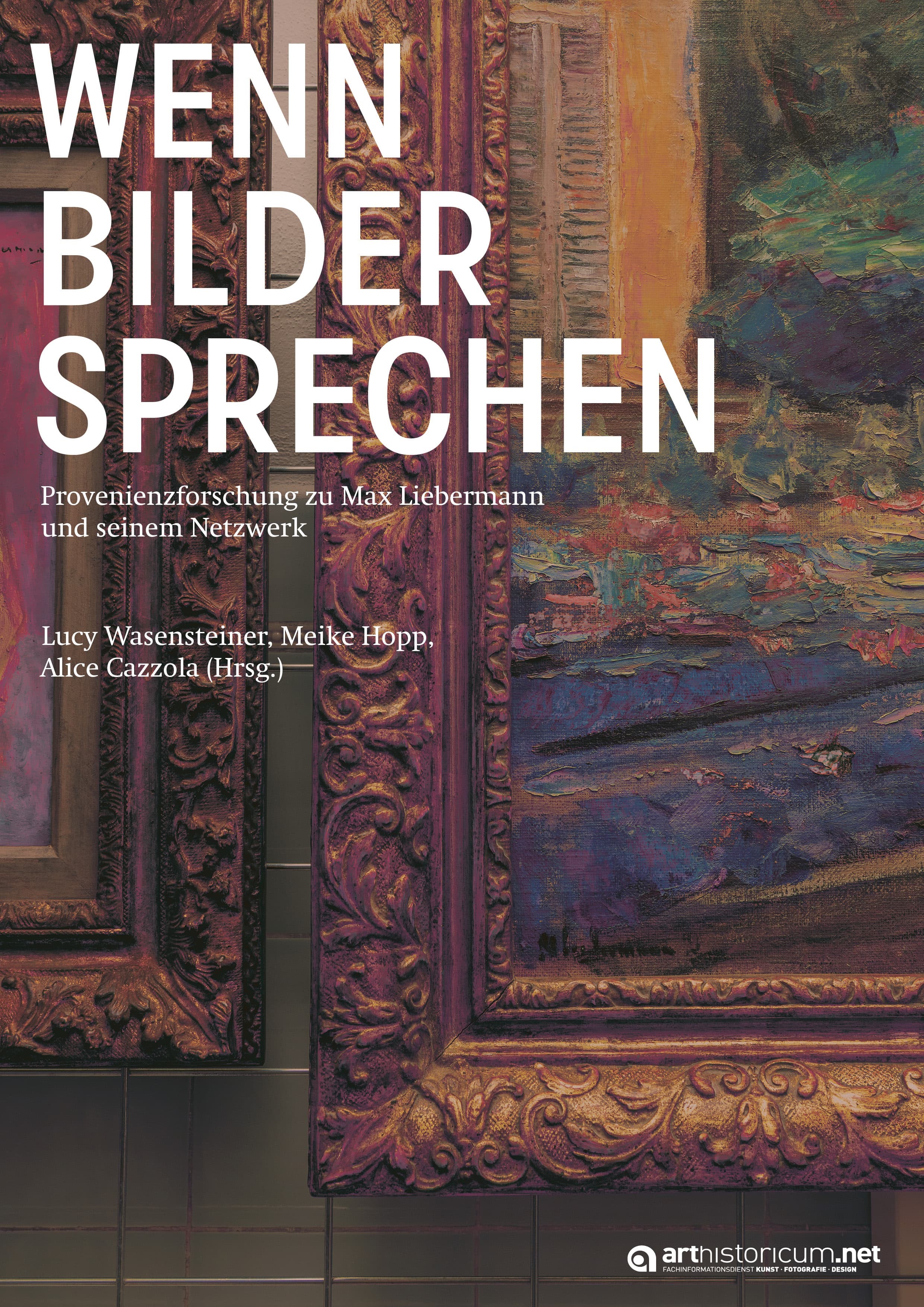Books
Requisiten: Die Inszenierung von Objekten auf der ›Bühne der Kunst‹
The rifle on the wall in Chekhov's plays, the hammer in medieval passion plays, the shield in early modern tournaments: objects accompany and enable actions, especially within a production by actors on a 'stage' and in front of an audience. The contributions in this volume revolve around the materiality and mediality of props, their production aesthetics, their spatial staging and the stages on which this takes place, but also - based on reception aesthetics - their relationship to the viewers. Objects that were used in theatrical contexts are examined as well as representations of their performative use; in addition to real locations, imaginative stages, such as those in paintings and texts, come into view; and beyond that, storage locations such as the trove and the museum are taken into account, in which props are staged in their very own way and appear as protagonists of their own history.
Sammlungsgut aus kolonialen Kontexten (China): In vier ostfriesischen Museen und Kultureinrichtungen
The publication brings together the contributions of the final event of the same name as well as the results of a project funded by the German Lost Art Foundation, supported by the Provenance Research Network in Lower Saxony, and coordinated by the Museum Office of the East Frisian Landscape. Facts & Files, Historical Research Institute Berlin, examined about 500 objects in four East Frisian institutions (Dt. Sielhafenmuseum Carolinensiel, Naturforschende Gesellschaft zu Emden von 1814, Ostfriesisches Teemuseum Norden and Fehn- und Schiffahrtsmuseum Westrhauderfehn) for possible colonial contexts in relation to Qingdao, the former "protectorate" of the then German Empire.
Georg Schweigger (1613–1690): Das Werk des Nürnberger Bildhauers im Spiegel der Dürer-Rezeption des 16.–20. Jahrhunderts
For several centuries, Georg Schweigger’s (1613–1690) small sculptural reliefs were appreciated as works by Albrecht Dürer and collected throughout Europe. Early art historical research, however, considered the objects to be forgeries and attributed them to the so-called Dürer Renaissance. For the first time, this publication makes the entire œuvre of the Nuremberg sculptor accessible to art history and shows that Schweigger’s reference to Dürer’s art was highly original and by no means guided by fraudulent intentions. The finely crafted works and their motifs reflect the complex thinking of his time, rendering tangible multiple sculptural as well as graphic influences and knowledge of international art movements. The author lays out a lucid path through the intricate ways of Dürer’s reception in sculpture from the 16th to the 20th century and re-locates Schweigger in South German sculpture of the 17th century.
(Trans)Nationalism and “Indigenisation”: Ambivalences in South African Settler Primitivism between the 1920s and 1960s
This work describes different facets of South African settler primitivism and the interactions of its protagonists, who moved between the poles of European modernism and local traditional cultures. Marked by great ambivalences, they oscillated between transnational and national approaches to an art production that appropriated indigenous landscapes, peoples and their visual cultures in order to indigenise white settlers to the South African land. A focus is set on the women artists Irma Stern and Maggie Laubser, who were key to the development of South African modernism.
Transfer von Bildideen: Zur Kultur des Kopierens in der rudolfinischen Malerei und der Rezeption von Bartholomäus Spranger (1546–1611)
The book focuses on the reception of Rudolfine painting, primarily Bartholomäus Spranger's (1546–1611). With the help of a new method, inspired by Warburg's Bildreihen, anonymous copies become new sources. Influenced by aesthetics around 1600, above all the aemulatio principle as an agonal concept peculiar to art, these art objects can not be neglected as mere reproductions. Copies with transfer of genre are to be understood as creative, partly imaginative translations. If one appreciates the copies as original objects with their own historiografy, they become evidence of an early modern culture of innovative copying.
Horizonte - Horizons: Geschichten und Zukunft der Migration / Histories and Future of Migration
Venturing into the unknown is one of the fundamental experiences of humanity, a throughline from the Stone Age to the space age, and part of every family history. Where to go? What to take with you? This volume introduces people who have become migrants for a large variety of reasons, including author Judith Kerr and artist Gerhard Richter. Their stories highlight that art and culture also depend on migration. Following the phases of migration, from departure to arrival and arriving, the volume’s authors describe experiences of migration. The final chapter is a glimpse into the future, i.e. mankind’s step into space between science and fiction.
Avantgarde oder uncool? Denkmalpflege in der Transformationsgesellschaft
Under the deliberately provocative title "Avantgarde or uncool?", this volume examines traditions of how heritage preservation is perceived by itself and by others. The background to this critical review is the question of the necessity of repositioning the profession - not only in view of the current challenges of climate change, but also the increasing political and social need for participation. The volume thus brings together not only reflections on the profession's self-image in times of change, but also on professional positions in relation to current issues such as participation, climate change and diversity.
Illusion und Verführung: Die plastischen Arbeiten von Jean-Léon Gérôme
After a long period of disregard by modernist art historians, Jean-Léon Gérôme (1824–1904) is once again one of the much-discussed artists of the 19th century. This monograph offers the first systematic account of his sculptural works, which have hitherto remained largely untouched by this reassessment. The study includes both a genre-historical investigation of the specific mediality of his sculptures and a cultural-scientific exploration of the rapprochement between antiquity and modernity that is evident in the works. In this way, new contexts emerge that reveal the complexity of Gérôme's œuvre.
Architecture Transformed: Das digitale Bild in der Architektur von 1980-2020
What influence does the digital image have on the design and visualisation of architecture? How has the representation of architecture that has not yet been built changed in the transition from the analogue to the digital age? To what extent can we speak of a media-specific shaping of architecture through digital design and representation tools? These questions are the focus of the exhibition publication, which attempts to trace the development of the digital image as a medium of architectural representation over the last four decades, from 1980 to the present day, using selected illustrations from architectural journals and the Schinkel Competition as examples.
Das Adelheidkreuz aus der Benediktinerabtei St. Blasien im Schwarzwald
The subject of this study is the so-called Adelheid Cross from the Benedictine Abbey of St. Blasien in the Black Forest, one of the most important cruces gammatae of the High Middle Ages with a cross relic. The original appearance of this cimelia and its transformation in the time around 1140/1150 are studied. The contemporary written tradition on the origin of the cross relic undergoes a new evaluation. Further focal points are the question of the patron, the list of other relics preserved in the cross and its liturgical function. The relation between the cross and a 12th century chasuble, also from St. Blasien, is also discussed.
L’ arte al tempo della ruina: Antonio Tebaldeo e tre poetiche storie di immagini nella Roma del Sacco
This contribution focuses on three sequences of Neo-Latin epigrams, unpublished to date, which poetically evoke the vicissitudes of three works of art during the Sack of Rome (May 1527-February 1528). Composed by a direct witness to the violences that rocked the city during those months, the Ferrarese poet Antonio Tebaldeo, the texts help clarify the intellectual profile of an author who nurtured a profound and enduring interest in the arts of his time. The main result of the inquiry, however, lies elsewhere. Contextualized by means of a systematic comparison with the writings of other humanists who commented on the Sack, these epigrammatic series illuminate hitherto unknown events which involved patrons, artists and objects among the most illustrious of the Rome of Pope Clement the Seventh, as well as an episode of profanation that had considerable literary resonance at the time. Specifically, the studie elucidates how Tebaldeo evoked in these poems the fate of a portrait of Ferrante Gonzaga that the young imperial captain commissioned as a gift for his mother, Isabella d'Este, but also the desecration inflicted by a Spanish soldier against a painted image of a Madonna with Child, and finally the vicissitudes - hitherto completely unknown -that befell Michelangelo's Bacchus.
Il presente contributo si incentra su tre sequenze di epigrammi neolatini, ad oggi inedite, che evocano poeticamente le storie di altrettante opere d’arte durante il Sacco di Roma (maggio 1527 – febbraio 1528). Composti da un testimone diretto delle violenze che sconvolsero l’Urbe in quei mesi, il poeta ferrarese Antonio Tebaldeo, i testi precisano il profilo intellettuale di un autore che nutrì un profondo e duraturo interesse per le vicende artistiche del proprio tempo. La principale acquisizione del presente studio risiede tuttavia altrove. Fatte oggetto di una puntuale contestualizzazione, per mezzo del raffronto con altri scritti coevi di umanisti che commentarono le vicende del Sacco, queste serie epigrammatiche illuminano vicende finora ignote ma che coinvolsero committenti, artisti e oggetti tra i più illustri della Roma di età clementina, come pure un episodio di profanazione che all’epoca ebbe una notevole risonanza letteraria. Nello specifico, lo studio chiarisce come Tebaldeo evocasse in questi versi le sorti di un ritratto di Ferrante Gonzaga che il giovanissimo condottiero imperiale commissionò come dono per la madre, Isabella d’Este, ma anche l’oltraggio inflitto da un soldato spagnolo ai danni di un’immagine mariana, e infine le vicissitudini – fino a questo momento del tutto sconosciute – toccate al Bacco di Michelangelo.
Der „Smaragd“ im Münster von Reichenau-Mittelzell
Already in the late Middle Ages, the "Reichenau emerald" in the Benedictine Abbey of Reichenau-Mittelzell was one of the major sights of the Lake Constance island. Along with the famous Sacro Catino in Genoa, it was long considered one of the largest emeralds in the world. The study deals with the accounts of the piece as well as its preservation and presentation from the 15th century onwards. Other focal points are the long-lasting propagation of the piece as an extraordinary natural object, a great treasure, and an important testimony to the history of the abbey. Furthermore, it is explained how the "emerald" was finally recognised as a "mere" glass river in the age of enlightenment.
Die Passionsdarstellungen von Albrecht Dürer: Theologie und Rezeptionsästhetik
Why did Dürer in his books of the Passion of Jesus Christ arrange Christ’s Decent Into Hell immediately after the Crucifixion instead of, as theologically and traditionally expected, in front of the Resurrection? This question started the interdisciplinary dissertation concerning Albrecht Dürers depictions of the Passion of Jesus Christ. On one hand, it examines which theological message the Nuremberg artist conveys in his passions scenes and to what capacity he implements (pre‑)reformatory ideas. On the other hand, this work covers the question how Dürer involves the viewer in his depictions and how he challenges - stimulated by the new humanist conception of man - to think anew and independently about the Passion of Jesus Christ.
Die Sammlung der Nationalgalerie zum langen 19. Jahrhundert: Erwerbung, Forschung, Dokumentation, Vermittlung
At the time of its founding, the National Gallery initially owned national and international art from the first half of the 19th century. Subsequently, the collection was expanded to include works from current art movements. On the occasion of the publication of the catalog of 19th-century paintings in 2017, a colloquium was held that focused on central aspects of the history of the Nationalgalerie’s collection. The lectures dealt, among other things, with various parts of the collection, with catalogs and documentation, with acquisition practices, with the plurality of modernity, with popularization and communication strategies. The contributions to this conference are now being made available to science and the interested public in this volume.
Luxus in Seide: Mode des 18. Jahrhunderts
Kulturgeschichtliche Spaziergänge im Germanischen Nationalmuseum, Volume 19
An unpublished silk gown in the rare andrienne silhouette and a red silk hoop skirt with whalebone support (1750) are the main focus of this book. They are complemented by jewelry and accessories, including an early linen parasol with printed designs in blue. Three professions – dressmakers, embroiderers (both male and female), and silk weavers – are discussed in detail. This study reveals the complex meaning of women’s fashion in the eighteenth century, which served to represent class status and also had great economic and cultural value. On the basis of about 100 objects from the collection of the Germanisches Nationalmuseum, this volume offers substantial insight into the French-influenced luxury clothing of the Rococo period.
Das Markusgrab im Münster von Reichenau-Mittelzell
The subject of this study is the late 15th century tomb altar for the bones of St. Mark the Evangelist in the former Benedictine abbey church of Reichenau-Mittelzell. In addition to the location, construction and dating of this late Gothic monument, its unusual design and the use of its altar chamber are also discussed. Further focal points are the emergence and use of St. Mark's relics in the Middle Ages north of the Alps as well as the associated effects. Furthermore, the veneration of St. Mark and the formation of his cult on the Reichenau as well as the erection of St. Mark's altar in the historical context are examined.
Das Faldistorium des Kardinals Raimund Peraudi
The subject of the study is the faldistorium of Cardinal Raimund Peraudi (1435-1506), which he carried with him as legatus a latere on his legation journey through Germany in 1501-1504 to proclaim the plenary indulgence. In addition to the material and technical findings, the inscriptions of the piece are also examined. Further focal points are the so far unknown provenance and the purposes of the seat as well as its importance as the official seat of a cardinal legate. Furthermore, the art-historical position of the object, the question of its place of production as well as the possibilities which led to the transfer of the chair to the Konstanz Cathedral Treasury are discussed.
L'art de l’Ancien Régime: Sortir du rang !
The history of art in the Ancien Régime has mainly focused on the major players, the "Fine Arts", the best documented institutions, Paris, other capitals and the courts. This book invites us to go beyond this "top-down" history, by bringing together the analytical frameworks of art history with approaches from social history, anthropology, material and visual culture, the history of science and technology, the sociology of networks, and gender studies. Revisiting historiographical frameworks, challenging academic canons and norms, questioning the margins, decentering the gaze, in a word "stepping out of line" - this is the methodological and thematic thread. Deployed around a wide range of media, genres, and objects, the eighteen contributions gathered in this volume seek to grasp the visual and material culture of the period in all its richness and complexity.
L’histoire de l’art de l’Ancien Régime s’est principalement focalisée sur les grands acteurs, les « beaux-arts », les institutions les mieux documentées, Paris, d’autres capitales et les cours. Le présent ouvrage invite à dépasser cette histoire « par le haut », en faisant dialoguer les cadres analytiques de l’histoire de l’art avec les approches de l’histoire sociale, de l’anthropologie, de la culture matérielle et visuelle, de l’histoire des sciences et des techniques, de la sociologie des réseaux et des études de genre. Revisiter les cadres historiographiques, défier les canons et les normes académiques, interroger les marges, décentrer le regard, en un mot « sortir du rang » – tel en est le fil conducteur méthodologique et thématique. Déployées autour d’un large éventail de médias, de genres, d’objets, les dix-huit contributions réunies dans ce volume s’attachent à saisir la culture visuelle et matérielle de l’époque dans sa richesse et sa complexité.
Stoff der Protestanten: Textilien und Kleidung in den lutherischen und reformierten Konfessionen
Wissenschaftliche Beibände zum Anzeiger des Germanischen Nationalmuseums, Volume 46
Textiles and clothing play a significant role in Christianity. After the Reformation, various textiles and types of garments took on specific denominational character for adherents of the Lutheran and Reformed faiths. Depending on the spaces in which such items were used, and by whom, they could be expressive of theological convictions and church ceremonies, social order and political power, and religious knowledge and economic strategies. The essays in this conference volume analyze the manifold layers of meaning that Protestant denominations ascribed to clothing and textiles from the Reformation period to about 1900.
Profane Wandmalerei im Raum Bozen um 1400: Mit einem Katalog der profanen Wandgemälde des Mittelalters im historischen Tirol
Within the history of European art, the medieval secular wall painting of the Tyrolean region is of outstanding importance. This is based on various factors, for example the early dating as well as the extent and relatively good state of preservation of numerous cycles. Within the surviving corpus, the profane wall paintings that were executed around 1400 in the city of Bolzano and its immediate surroundings occupy a special position. There is evidence of extraordinarily extensive and high-quality production around this time, some of which has received little attention so far. This dissertation offers the first art-historical study to treat the Bolzano examples of profane mural painting in its entirety and complexity and to make it accessible to the interested public.
Zwischen Enklave und Vernetzung: Kunstgeschichte an der TU Darmstadt
Art history at the Technical University of Darmstadt looks back on a 150-year history. This anniversary was the starting point for a research project and a symposium, the results of which are presented in this volume.
A special feature of art history in Darmstadt is, that it is not located at one institute, but is represented by two professorships in the departments of architecture and humanities. This volume puts this unusual constellation into historical perspective and argues that it is precisely the status as an art historical “enclave” that has led to intensive networking.
The Involuntary Self-Portrait: Automimesis and Self-Referentiality in the Art Literature of the Italian Renaissance
Automimesis or the idea that “every painter paints himself” was a notion that was frequently voiced in art literature of the Italian Renaissance. It was initially thought to be an artistic flaw which threatened the faithful imitation of nature. The corporeal or spiritual similarity between an artist and his work, however, was soon to become a facet that was regarded as positive. Considering biographies of artists, art treatises, and artworks, this book explores the reasons for this paradigmatic shift and shows how ideas from the early modern period continue to shape our modern understanding of the autonomy of the arts.
4D: Dimensionen | Disziplinen | Digitalität | Daten
20 years ago, prometheus was launched as a distributed digital image archive for art history and image-based disciplines, marking a fundamental step for the digital transformation in the respective subjects. Since then, the contours of a future digitally supported science have become clearer. The Digital Humanities are expanding the methodological field of the humanities, interdisciplinary collaboration to answer research questions is increasingly gaining acceptance, and the establishment of a National Research Data Infrastructure is laying the foundations for a science system in transition.
The 2021 anniversary conference discussed the transformation of the sciences under four perspectives (4D) and deliberately went beyond the subject boundaries of art history.
In this publication, the contributions appear successively. They are edited, have the final layout and are included unchanged in the full volume. Each early-view article receives a persistent DOI and is thus fully citable; only no pages can be given yet. Only when all articles are available will they be given page numbers. Please use the citation recommendation given in the PDF for the Early View. In addition to the e-book (PDF), a print edition will also be published.
Wenn Bilder sprechen: Provenienzforschung zu Max Liebermann und seinem Netzwerk
Thanks to financial support from the German Lost Art Foundation, since 2020 the Liebermann-Villa in Berlin has been able to conduct a provenance research project into its permanent collection, with a particular focus on cultural objects displaced as a result of National Socialist persecution. This volume results from the 2021 conference “Provenance Research, Max Liebermann and his Network. Reports from the Field” staged in collaboration with the Technische Universität Berlin. The book is published on the occasion of the exhibition “When Pictures Speak. Provenance Research in the Collection of the Liebermann-Villa” (Liebermann-Villa am Wannsee, October 2022 to March 2023). The volume explores, among other themes, provenance research into Max Liebermann and his network in archives, on the art market, in museums and in academia.
Kunst und Material. Konzepte, Prozesse, Arbeitsteilungen
Media diversity, an expanded notion of the artwork and a changed understanding of creativity have shaped art since the modern era. This creates new challenges for the reception and preservation of a work as well as for the concept of authorship and the idea of authenticity. The separation of design and implementation in contemporary art also establishes a new form of art production based on the division of labour with manifold implications. The contributions in this volume show that such developments require innovative, interdisciplinary approaches at the interface of the history of technology, conservation science and art history.



